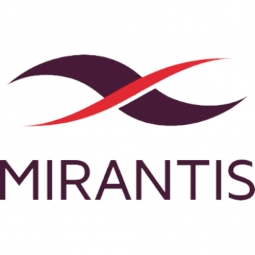下载PDF
With OpenStack, Telstra reduces provisioning time from weeks to seconds
技术
- 基础设施即服务 (IaaS) - 云计算
- 网络与连接 - 软件定义网络
适用行业
- 电信
适用功能
- 物流运输
用例
- 过程控制与优化
- 实时定位系统 (RTLS)
服务
- 云规划/设计/实施服务
- 系统集成
挑战
Telstra, a leading telecommunications and technology company, was facing challenges in dynamically allocating bandwidth to efficiently provide the exact network resources required by every user at any given time. This was critical to minimize latency in applications with large volumes of fast-moving data and to maintain high end-to-end performance in bandwidth-intensive applications, such as video, gaming and other multimedia. The rapid growth of cloud computing was putting tremendous pressure on the company to ensure reliable, high-performance networking services despite heavier traffic patterns and greater strain on network bandwidth for distributed computing operations. The company's PEN group had historically built out infrastructure that made provisioning a circuit for customers a multiweek process that included manually setting up switches, routers and other equipment. Customers were becoming more savvy and demanded more speed — in tasks ranging from provisioning circuits to allocating bandwidth.
关于客户
Telstra is a leading telecommunications and technology company with headquarters in Australia. The company operates in 23 countries, including Australia, with 36,000 employees globally. Telstra’s solutions range from global connectivity, managed network services, cloud services, collaboration services, voice and mobile services and satellite and media services. The Global Enterprise and Services division of Telstra provides IP networks and network applications services. In 2015, Telstra acquired Pacnet Limited that doubled their customer base in Asia and gave them access to the PEN product offering.
解决方案
Telstra selected Mirantis OpenStack, along with integration services from Mirantis, to provide a flexible bandwidth solution utilizing SDN across multiple geographically distributed data centers to provide point-to-point connectivity between OpenStack clouds. Customers work from the PEN API, a self-service customer portal and PEN UI, the network control plane powered by Mirantis OpenStack using Fuel, to dynamically provision network connectivity and bandwidth by calling the API with automation tools. Telstra’s SDN platform, known as PEN, is the first pan-Asian Network-as-a-Service (NaaS) architecture available to carriers and enterprises. With PEN, port-to-port connections can be provisioned in about four seconds, even between geographically distant data centers in different countries and continents. Carriers and enterprises can easily create a network of clouds throughout the Asia-Pacific region and the United States.
运营影响
数量效益
相关案例.

Case Study
Vodafone Hosted On AWS
Vodafone found that traffic for the applications peak during the four-month period when the international cricket season is at its height in Australia. During the 2011/2012 cricket season, 700,000 consumers downloaded the Cricket Live Australia application. Vodafone needed to be able to meet customer demand, but didn’t want to invest in additional resources that would be underutilized during cricket’s off-season.

Case Study
SKT, Construction of Smart Office Environment
SK T-Tower is the headquarters of SK Telecom. Inside the building, different types of mobile devices, such as laptops, smartphones and tablets, are in use, and with the increase in WLAN traffic and the use of quality multimedia data, the volume of wireless data sees an explosive growth. Users want limitless Internet access in various places in addition to designated areas.









